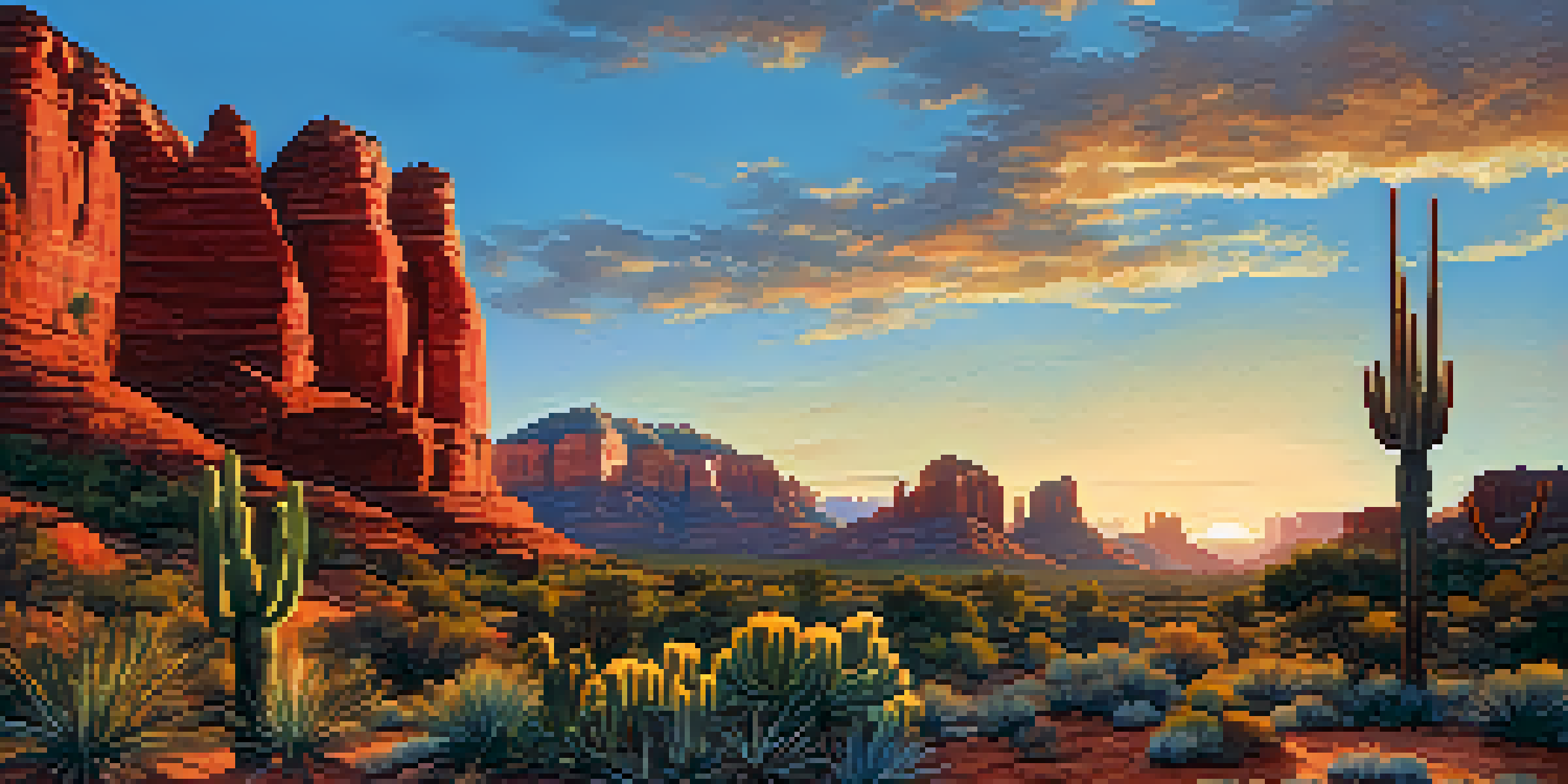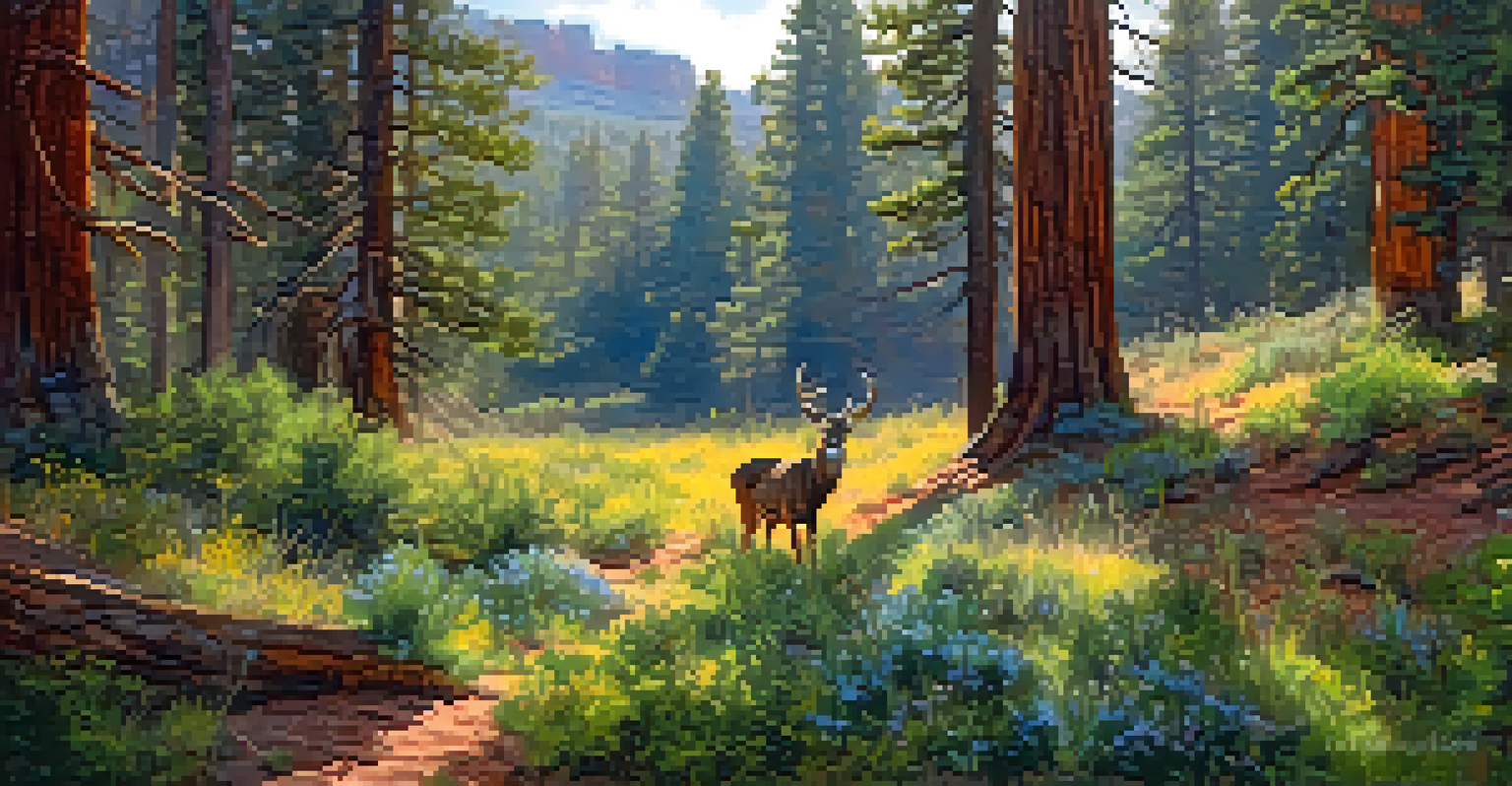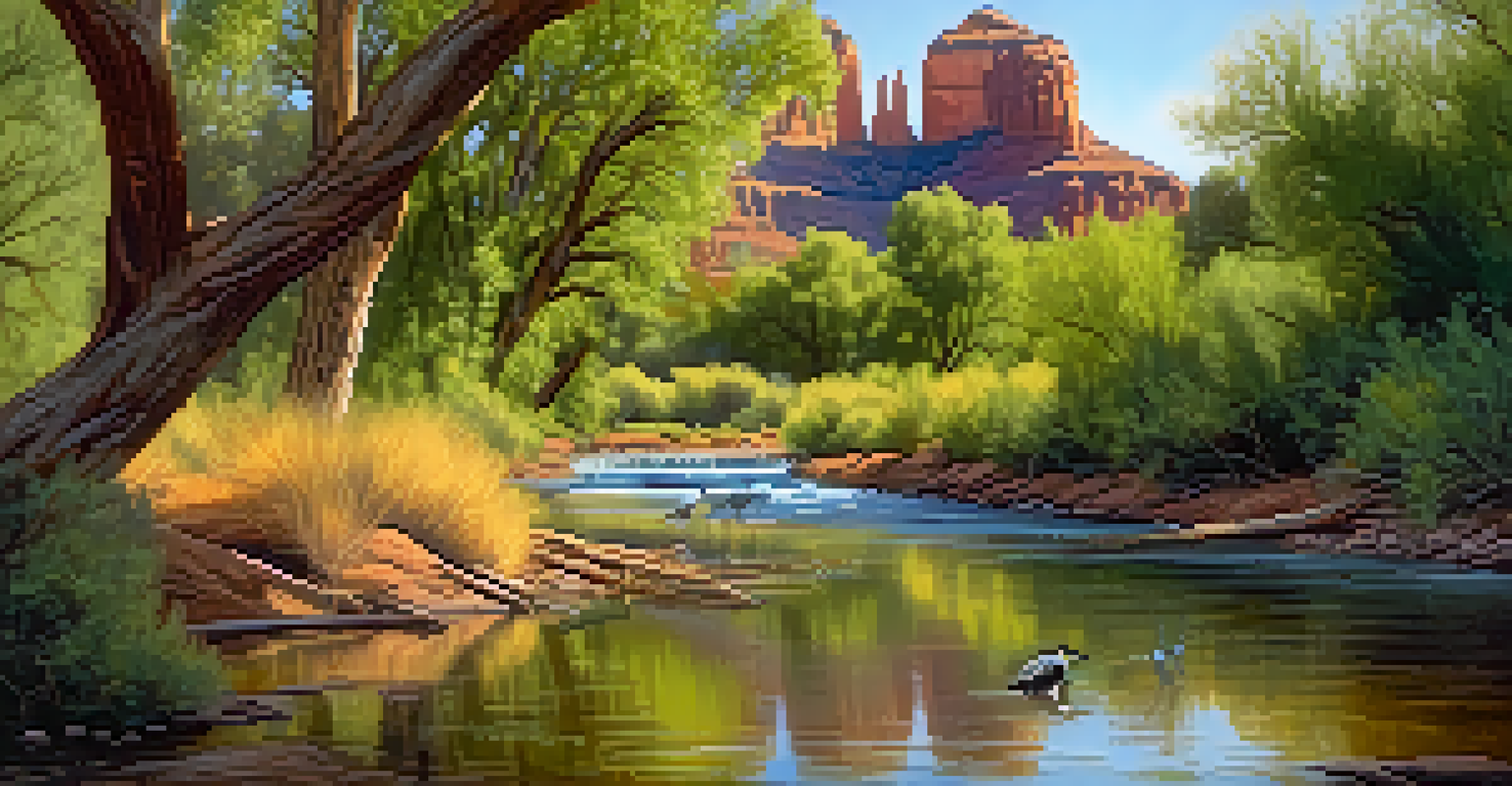Understanding Sedona's Ecosystems and Their Wildlife

Introduction to Sedona's Diverse Ecosystems
Sedona, Arizona, is renowned for its stunning red rock formations and vibrant landscapes. But beyond its scenic beauty lies a complex web of ecosystems that support a rich variety of wildlife. From lush riparian zones to arid deserts, each ecosystem plays a crucial role in maintaining biodiversity in the region.
In every walk with nature one receives far more than he seeks.
These ecosystems not only provide habitat for various species but also contribute to the region's ecological balance. Understanding these environments helps us appreciate the intricate relationships between plants and animals. Moreover, it highlights the importance of conservation efforts in preserving these unique habitats.
As we delve deeper into Sedona’s ecosystems, we’ll explore the flora and fauna that call this beautiful area home. From towering pine forests to colorful wildflower meadows, Sedona’s biodiversity is a treasure trove waiting to be discovered.
The Role of the Red Rock Desert Ecosystem
The Red Rock Desert is perhaps the most iconic ecosystem in Sedona, characterized by its striking red sandstone formations. This arid environment is home to a variety of resilient plants and animals adapted to survive in harsh conditions. Cacti, yucca, and sagebrush flourish here, demonstrating nature’s ability to thrive in limited water.

Wildlife in this desert ecosystem is equally fascinating. Species like the desert tortoise, various lizards, and a variety of birds, including the iconic roadrunner, have adapted to the dry conditions. Their unique survival strategies showcase the intricate balance of life in this challenging environment.
Sedona's Ecosystems Are Diverse
Sedona boasts a variety of ecosystems, from arid deserts to lush forests, each supporting unique wildlife and plant species.
Visiting the Red Rock Desert offers a chance to witness these adaptations firsthand. Exploring the trails, you might spot wildlife or observe the stunning plant life that makes this ecosystem so remarkable.
Exploring Sedona's Forest Ecosystem
Transitioning from the arid desert, Sedona boasts lush forest ecosystems primarily consisting of ponderosa pine trees. These forests not only provide critical habitat for many species but also play a significant role in regulating the local climate. The shade and moisture they create support a diverse understory filled with wildflowers and shrubs.
The earth has music for those who listen.
Common wildlife found in these forests includes deer, elk, and various bird species that rely on the trees for nesting and food. The vibrant ecosystem is alive with sounds—birds chirping, leaves rustling, and the occasional call of a coyote. This dynamic environment is an essential part of Sedona's ecological landscape.
Hiking through these forests can be a refreshing escape, allowing you to connect with nature while observing the diverse wildlife that thrives here. Each step reveals a new part of the intricate web of life that exists within Sedona's forest ecosystems.
The Importance of Riparian Zones
Riparian zones, which are areas adjacent to rivers and streams, play a vital role in Sedona's ecosystems. These areas are incredibly rich in biodiversity, providing essential resources like water and shelter for numerous species. The lush vegetation found in these zones contrasts sharply with the surrounding arid landscapes, creating a haven for wildlife.
Birds such as herons and egrets are commonly seen in these areas, while mammals like beavers and otters thrive in the water-rich environment. The plants in riparian zones, including willows and cottonwoods, help stabilize the soil and provide critical habitat for many creatures. This unique ecosystem is crucial for maintaining the health of Sedona's waterways.
Conservation Is Crucial
Community involvement and conservation efforts are essential for protecting Sedona's ecosystems and maintaining biodiversity.
Understanding the significance of riparian zones emphasizes the need for conservation efforts. Protecting these areas ensures that the wildlife dependent on them continues to thrive, contributing to the overall biodiversity of Sedona.
Seasonal Changes and Wildlife Adaptations
Sedona's ecosystems experience significant seasonal changes that affect both the environment and its wildlife. Spring brings blooming wildflowers and increased animal activity, as many species emerge from hibernation or return from migration. Summer sees lush growth and the vibrant sounds of life, while fall showcases stunning foliage as trees prepare for winter.
Wildlife adaptations to these seasonal changes are fascinating. Animals like bears and mountain lions adjust their behaviors, while birds may change their feeding habits based on available food sources. These adaptations are critical for survival and underscore the resilience of Sedona’s wildlife.
Observing these seasonal transformations can be a rewarding experience for nature enthusiasts. Each season offers a unique perspective on the ecosystems and the wildlife that inhabit them, reminding us of the beauty and complexity of nature's cycles.
Threats to Sedona's Ecosystems
Despite Sedona's natural beauty, its ecosystems face various threats that can impact wildlife and their habitats. Urban development, climate change, and invasive species pose significant challenges to the region's biodiversity. As more people flock to Sedona for its scenic views, the pressure on these ecosystems increases.
Invasive species can outcompete native flora and fauna, disrupting the delicate balance of these ecosystems. Additionally, climate change is altering weather patterns, affecting water availability and food sources for many species. Understanding these threats is essential for fostering a sense of responsibility toward conservation.
Seasonal Changes Impact Wildlife
The seasonal transformations in Sedona's ecosystems significantly affect wildlife behaviors and adaptations throughout the year.
By raising awareness and promoting conservation efforts, we can help protect Sedona's unique ecosystems. Every small action contributes to preserving this natural treasure for future generations to enjoy.
Conservation Efforts and Community Involvement
Community involvement plays a crucial role in the conservation of Sedona's ecosystems. Local organizations and volunteers actively participate in restoration projects, educational programs, and wildlife monitoring initiatives. These efforts are essential for raising awareness and ensuring the sustainability of Sedona's diverse habitats.
Programs aimed at protecting native plants and controlling invasive species are vital for maintaining biodiversity. By engaging the community, these initiatives foster a sense of stewardship and encourage residents and visitors alike to become advocates for the environment. Together, they work to create a lasting impact on Sedona's ecosystems.

As we support local conservation efforts, we also enhance our own experiences in the area. Understanding the importance of these ecosystems deepens our connection to Sedona, turning a simple visit into a meaningful relationship with nature.
Conclusion: Embracing Sedona's Natural Heritage
In conclusion, Sedona's ecosystems are a testament to the beauty and diversity of nature. From the arid Red Rock Desert to the lush forests and vital riparian zones, each environment supports a unique array of wildlife. Understanding these ecosystems encourages appreciation and respect for the natural world.
As stewards of the environment, we have a responsibility to protect these ecosystems and the wildlife that rely on them. By participating in conservation efforts and raising awareness, we can ensure that Sedona's natural heritage is preserved for future generations.
Exploring Sedona's ecosystems offers not only a chance to witness stunning landscapes but also an opportunity to connect with nature. By embracing this rich biodiversity, we can foster a deeper understanding of our role in maintaining the delicate balance of life on Earth.